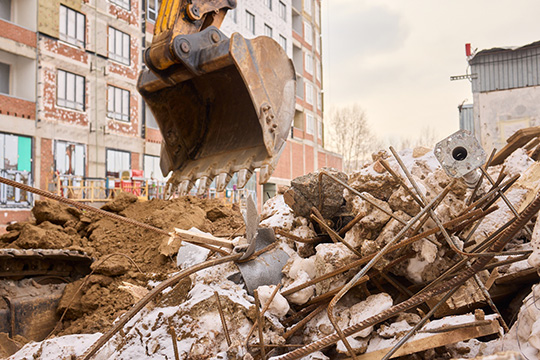Streamline debris management with smart planning, cost control, and eco-friendly strategies for your next project.
Managing debris is often an overlooked part of project planning, but it directly affects timelines, costs, public safety, and environmental outcomes. Whether you’re handling construction debris, material from a demolition process, or fallen waste after a destructive storm, having a clear approach to debris management can save time and reduce unexpected challenges. This article outlines practical, effective strategies you can apply to improve how debris is handled, from the planning phase to final clearance.
Every successful debris management begins with a clear understanding of the type and volume of debris expected. Will the project generate mostly building materials, hazardous waste, or organic debris? This matters because each type has its own handling requirements and disposal methods.
For example, many businesses in Tarrant County rely on third-party cleaning providers to maintain safe and hygienic workplaces. When researching Fort Worth cleaning services, businesses should compare service scopes and customer feedback. Factors such as pricing models, included tasks, and scheduling flexibility all play a role in making an informed decision.
In the same way, approaching debris management requires careful research and selection of the right partners, tools, and processes. Early assessments help you anticipate road debris obstructions, plan for emergency debris removal services if natural disasters strike, and coordinate with authorities who may offer technical assistance.
One of the most effective debris management strategies is separating materials at the source. For instance, keeping construction debris separate from organic or hazardous waste speeds up disposal and reduces costs for debris removal.
Mixed waste piles often need special sorting at disposal sites, which can slow down clearance efforts and increase fees. Assigning clear zones or bins for different materials during the demolition process simplifies the work for hauling crews and makes recycling or reuse more feasible. For example, metal, concrete, and wood can often be recycled or repurposed if kept clean, reducing environmental impacts and cutting down on the volume sent to landfills.
After a major disaster, public health and safety concerns make debris clearance urgent. Large-scale debris removal may require coordination between public agencies and the private sector. Local governments often set rules around the burning of debris, the transport of hazardous materials, and the permitted disposal of debris.
Reaching out to municipal offices early in the planning phase helps you understand the local landscape. At the same time, private contractors can provide valuable resources such as specialized equipment, trained personnel, and access to disposal facilities. Including both public and private players in your plan gives you flexibility when unexpected situations arise.
Managing debris costs requires careful oversight to avoid expensive mistakes later. However, cost-cutting shortcuts can lead to legal or environmental problems later. Skipping proper permits, failing to document disposal of debris, or ignoring environmental guidelines can result in penalties or remediation expenses.
Instead, focus on monitoring costs through careful tracking and reporting. Using digital tools to log how much debris is cleared, where it’s taken, and which vendors are involved can give you real-time insight into your budget. It also builds a paper trail in case future audits or environmental reviews arise. A balanced approach protects your bottom line without sacrificing public health or compliance.
Debris management is also about resilience. Projects exposed to severe weather or located in disaster-prone areas should have backup plans. For example, emergency debris removal services may need to be on standby during hurricane season. Building flexibility into your contracts and scheduling makes it easier to adapt if conditions shift unexpectedly.
This is especially important in areas affected by major storms, where debris volumes can skyrocket in a short time. Without advance preparation, teams can be left scrambling, struggling to clear blocked roads, manage dangerous materials, or coordinate with emergency services.

Every cleanup operation has environmental impacts, from the carbon footprint of hauling trucks to the effects of landfill overuse. Taking a more environmentally responsible approach might include minimizing the burning of debris, which can release harmful pollutants, or prioritizing recycling of building materials when possible.
For projects involving large demolition processes, recycling concrete, metal, and wood reduces strain on ecosystems and lowers disposal costs. Small changes, such as sourcing local disposal sites or optimizing haul routes, can also contribute to a more sustainable outcome.
No plan is perfect, and each project brings new lessons. After completing a major cleanup, review what worked and what didn’t. Did you underestimate the volume of waste? Were there gaps in your coordination with agencies or contractors? Did the technical assistance you received meet expectations?
Building these waste strategy insights into your next project improves efficiency and cuts down on repeated mistakes. Over time, refining your approach leads to smoother operations, better budget control, and stronger outcomes.
Effective debris management is about much more than just hauling material away. It’s a structured process that affects safety, costs, and environmental impact. With clear assessments, careful planning, strong coordination, and a commitment to learning, you can make debris management a smoother, more predictable part of your project.
About the Author:
Maria Thomson is a freelance writer specializing in practical business and project management topics. When she’s not writing, she enjoys hiking local trails and exploring nature.
In this episode, I sat down with Beejan Giga, Director | Partner and Caleb Emerson, Senior Results Manager at Carpedia International. We discussed the insights behind their recent Industry Today article, “Thinking Three Moves Ahead” and together we explored how manufacturers can plan more strategically, align with their suppliers, and build the operational discipline needed to support intentional, sustainable growth. It was a conversation packed with practical perspectives on navigating a fast-changing industry landscape.